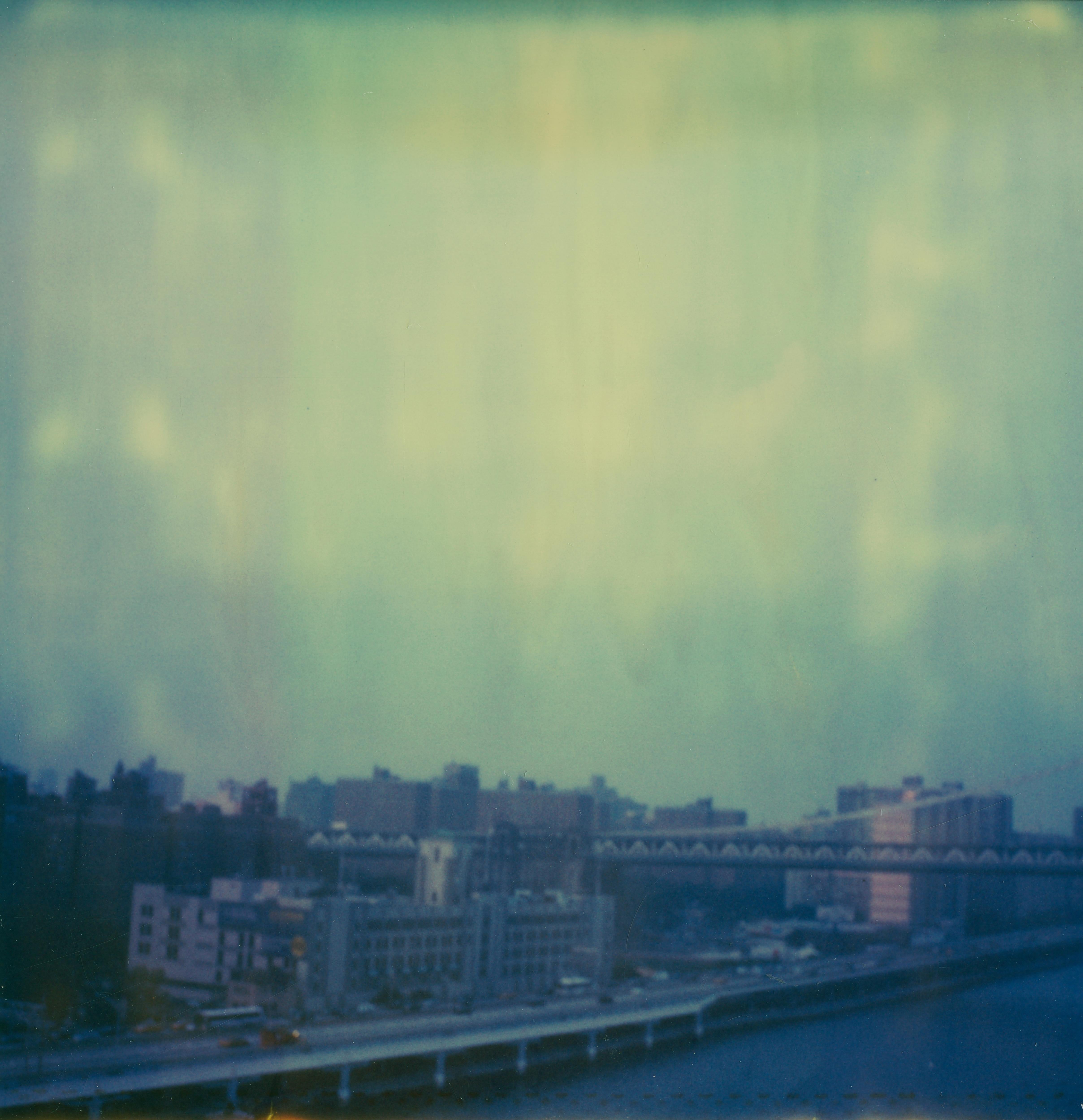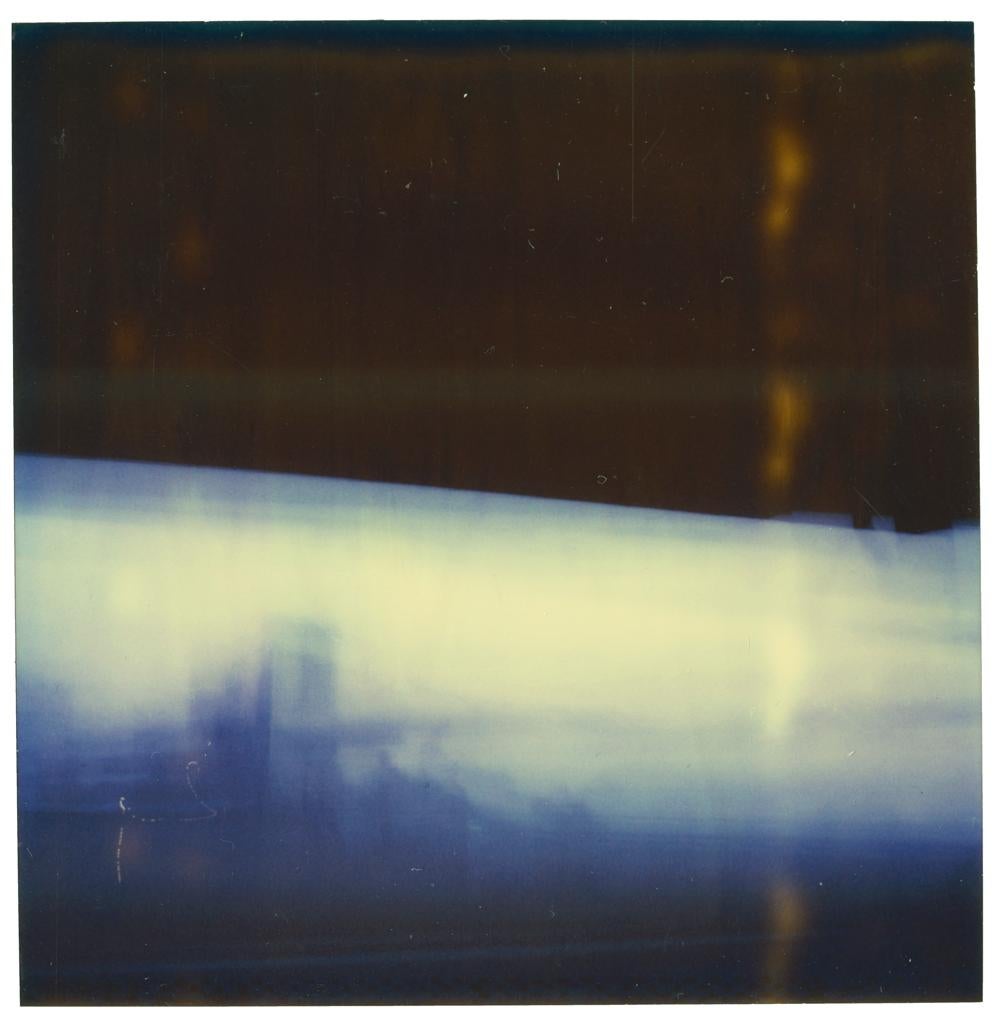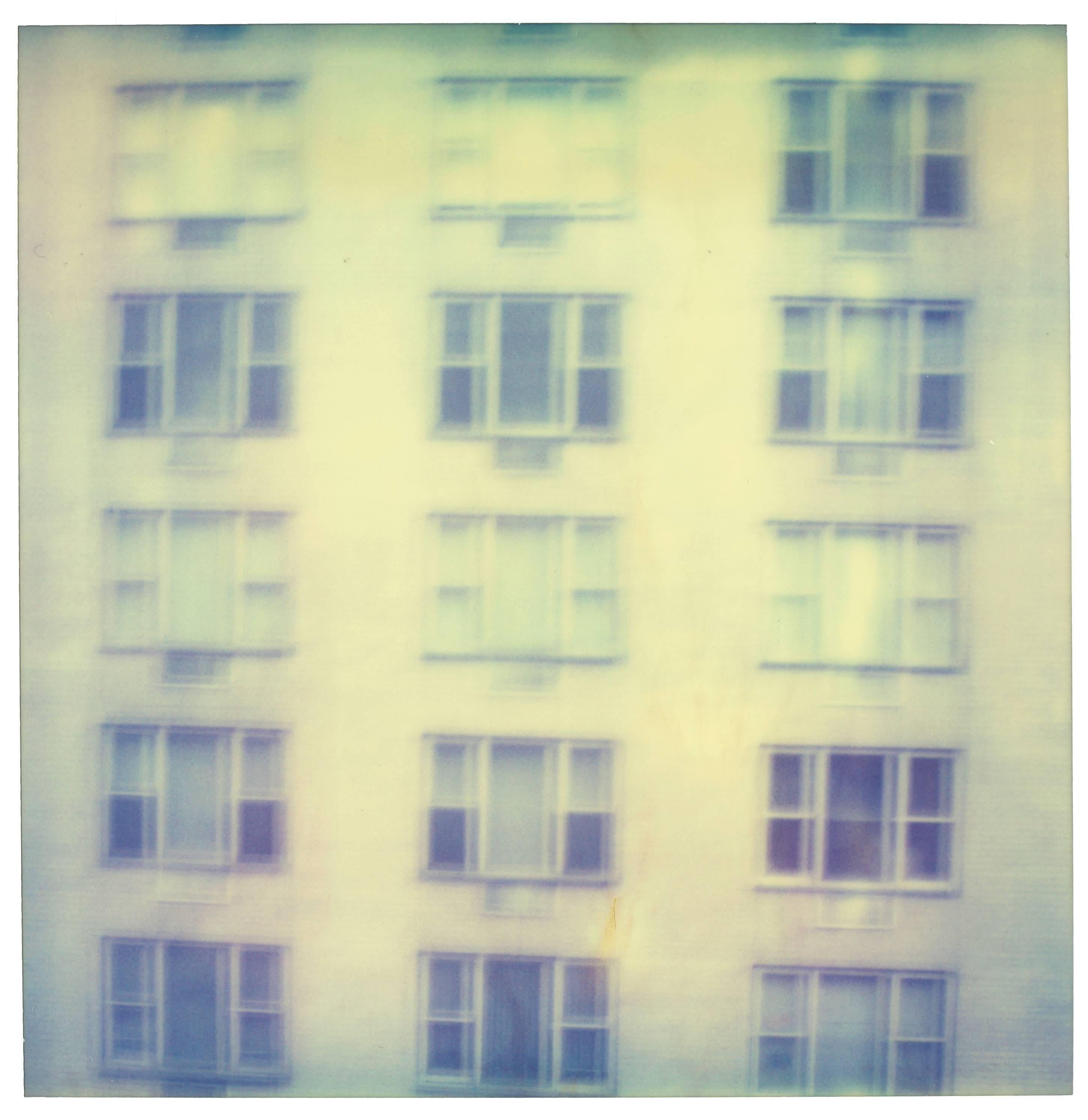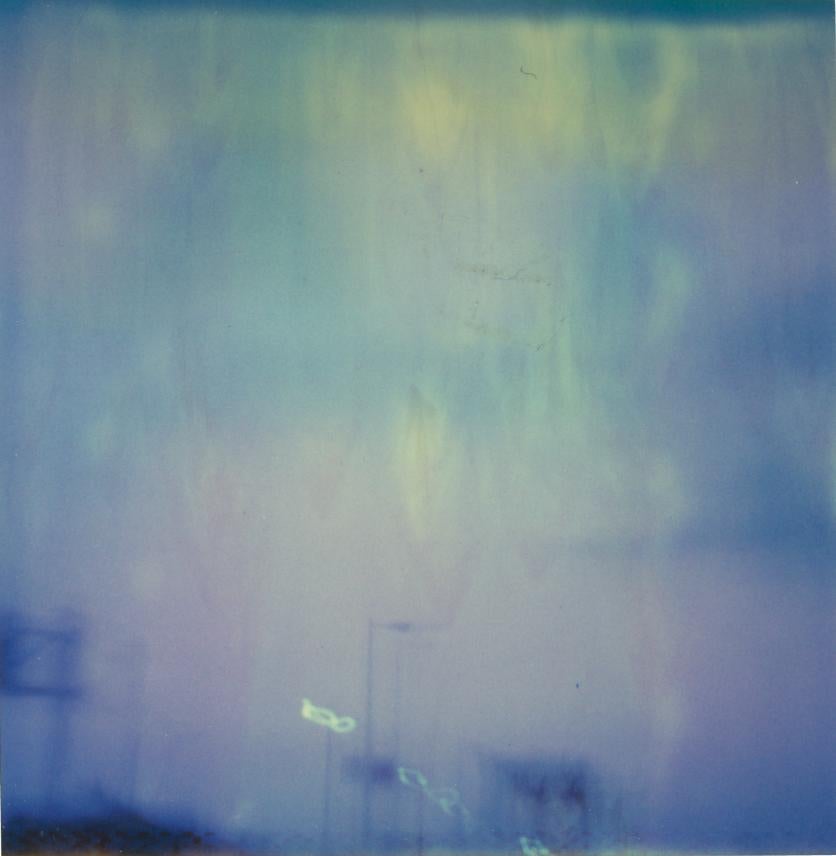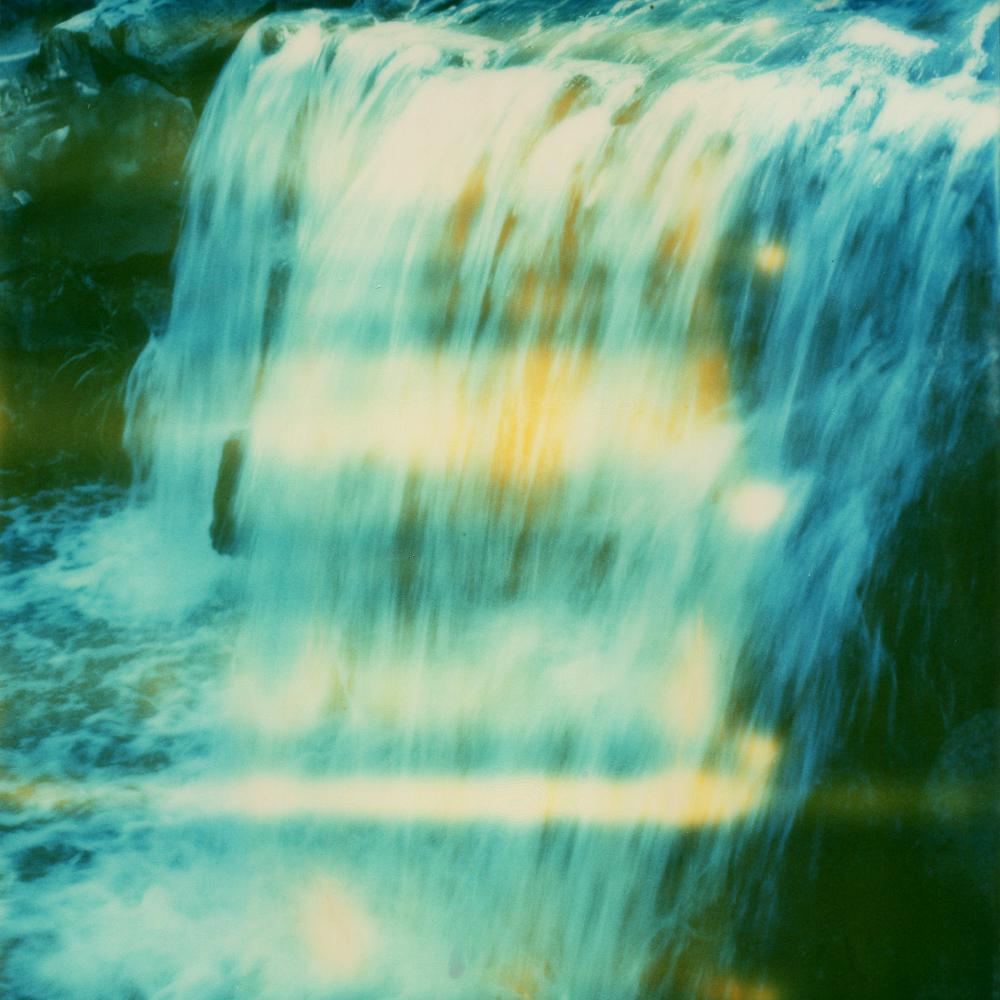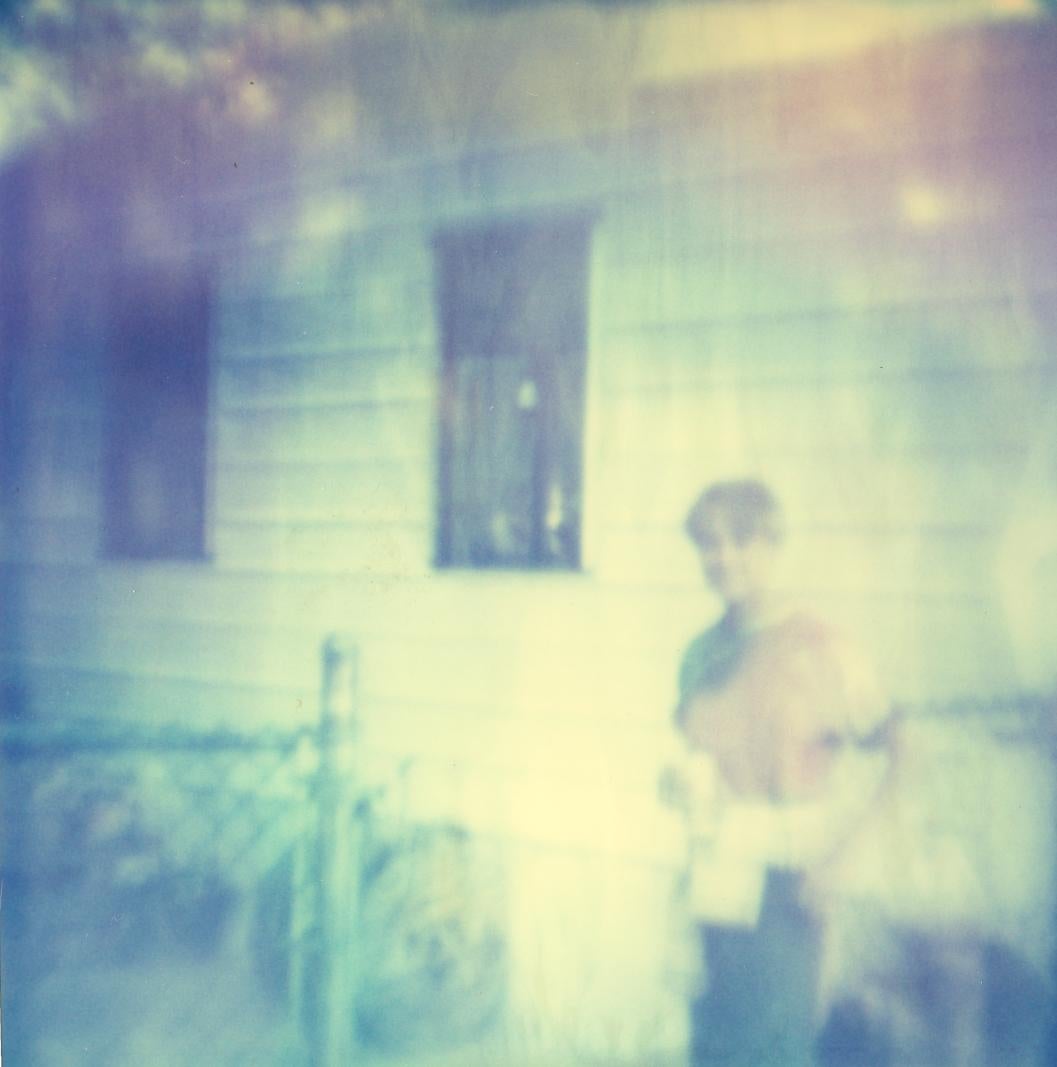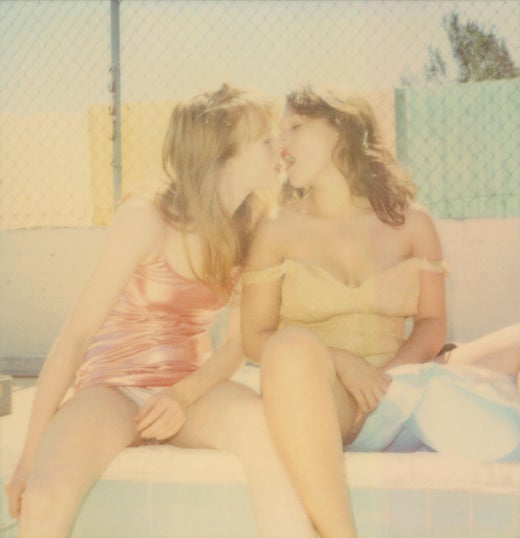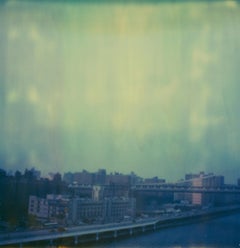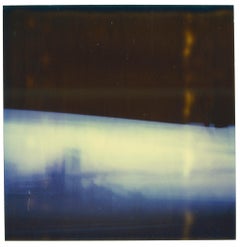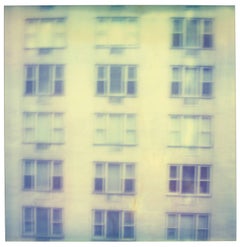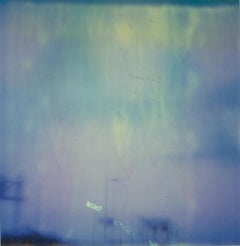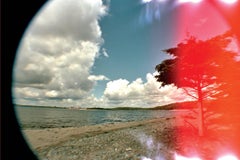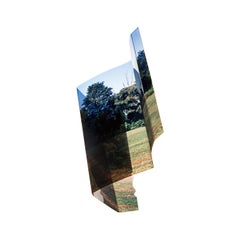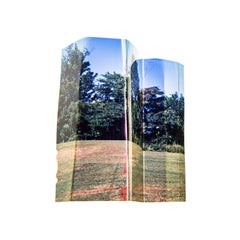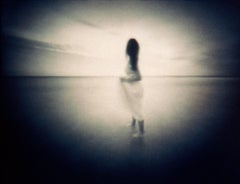Items Similar to Hudson (Stay) - Polaroid
Want more images or videos?
Request additional images or videos from the seller
1 of 2
Stefanie SchneiderHudson (Stay) - Polaroid2006
2006
$380
£286.94
€332.90
CA$534.02
A$594.97
CHF 310.60
MX$7,223.76
NOK 3,904.09
SEK 3,690.31
DKK 2,485.09
About the Item
Hudson (Stay) - 2006
20x20cm,
Edition of 10,
Archival C-Print, based on the Polaroid.
Certificate and Signature label.
Artist Inventory No. 1575.
Not mounted.
Stefanie Schneider's art work was used for the Marc Forster movie 'Stay'. featuring Ewan McGregor, Naomi Watts and Ryan Gosling. Naomi and Ryan were both portraying artists and Stefanie's art was the art both created during the movie. Stefanie's images were also used for Ryan Gosling's memory sequence, for the end titles, for edits in between and as art paintings hanging in several scenes within the movie.
Torsten Scheid, “Fotografie, Kunst, Kino. Revisited.”, FilmDienst 3/2006, page 11-13
Photography Art Cinema. Revisited
Stay expands a traditional connection through new facets
Interwoven between the media of photography and film is a veritable mesh-work of technical, motific, metaphorical and personal interrelationships. Extending from photo-film which, as in La Jetée by Chris Marker (France, 1962) is a montage of single, unmoving photographs all the way to the portrayal of photographic motifs in Hollywood cinema―most recently in Memento (USA, 2000) and One hour photo (USA, 2002)―is the range of filmic-photographic interactions on the one hand, and from the adaption of modes of cinematic production to the imitation of film stills on the other. For instance, with the legendary Untitled Film Stills (1978) of the American artist Cindy Sherman, who later made her debut as a film director with Office Killer (USA, 1997) and thereby, like many others, changed sides: Wim Wenders, Robert Frank and Larry Clark are doubtlessly the most successful of these photographic-filmic border crossers. This brief survey provides only a vague indication of the dimensions of this intermedial field, which in fact extends much further and is constantly being cultivated.
Also as a motif in film, photography has experienced a historical transformation: Photographers were once considered to be technicians who mastered a craft but never achieved the status of artists. Photographer-figures were caught in the allure of beautiful appearance, incapable of penetrating to the actual essence of things. Such depth was reserved for literature or painting. When photography in film touched upon the sphere of art, then most often as its contrasting model, as the metaphor for a superficial access to the world. Coming to mind are Fred Astaire as a singing fashion photographer in Stanley Donen’s musical film Funny Face (USA, 1957), or the restless lifestyle-photographer in Michelangelo Antonioni’s genre-classic Blow up (GB, 1966). For the doubting Thomas, only that exists which can be photographed. He ultimately enters the world of fantasy and thereby the field of art only unwillingly, when he becomes entangled in the world of his images. The last of his detail-enlargements shows only the photographic grain and has lost all connection to reality. The photograph looks as if it had been painted by Bill, the painter who is both friend and antagonist to the protagonist.
Photography as Art
It was first around the end of the last century that numerous filmmakers discovered photography as a genuine art form. In The Bridges of Madison County (USA, 1995) a sensitive Clint Eastwood stands, camera in hand, on the threshold of artistic status, and in Smoke (USA, 1994) a tobacco merchant ripens into a philosopher through his involvement in photography. Finally, in John Water’s parody of the art market, Pecker (USA, 1998), a provincial tom-fool is hyped into celebrated stardom amid the New York art scene because of his blurred snapshots. This film about a postmodern Kaspar Hauser in photographic art (with clear parallels to Richard Billingham, the British shooting star of the nineteen-nineties), not only takes into account the exponentially expanded significance of photography in the art market, but also attributes to photography an extreme degree of conformity to the “operating system” of the visual arts. This admittedly ironic equation of photography and the visual arts is new. It is repeated with much more earnestness in Lisa Chollondencko’s High Art (USA) from the same year. Artistic photography has finally become established in a cinematic context.
Stay
Stay (USA, 2005) could have fitted in seamlessly here. Considering that the films High Art and Pecker establish photography as an ideal art form at the end of the millennium, director Marc Forster (Monster’s Ball, Finding Neverland) takes a step backward; he revives an anti-technical, intuitive concept of art, including the customary clichés about madness and genius. This choice documents less an anachronistic notion of art (especially considering that painting is currently experiencing a Renaissance) than instead the appraisal that paintings are more suitable for representing the free objectification of the mind. Stay is not an artist-film but rather a psycho-thriller in which the borders between dream and reality become blurred.
The psychiatrist Sam Foster (Ewan McGregor) has saved his girlfriend, the artist Lila (played by Naomi Watts) from committing suicide. Now he is attempting to keep another patient, the art student Henry Letham (Ryan Gosling) from killing himself, but succumbs in that endeavor more and more to a whirlpool of inexplicable events. Any further words would already be interpretation and would reduce the significatory potential of the film. The film is loaded with meaning down to the tiniest details―including the notoriously short pants of the protagonist―or it willingly offers itself as a projection screen for speculations. Line-crossings, subjective camera-views of utterly strange figures, and pan-shots in which space and time shift abruptly all serve to confuse the viewer. One scene switches with no transition into paper photography; other scenes hesitate, repeat themselves. The temporal continuum of the film is caught in loops. Figures merge into each other. Miracles occur: blind people regain their sight, the dead are reawakened to life. If it is the continuity of events which distinguishes dream from reality, then everything which the psychiatrist Sam experiences is a dream.
It is precisely here, in this intermediate world of imagination and reality, that the film brings paintings into play, and with them the Polaroid photographs of Stefanie Schneider. For even if the paintress Lila drips paint all over herself in the film, in fact her paintings are without exception based on photographic models which―thanks to modern technology―have been printed onto canvas.
Bizarre Dream-Worlds
Stefanie Schneider’s vague and evanescent Polaroids work towards a painterly impact. The artist, who resides alternately in Berlin and Los Angeles, exclusively uses out-of-date film material. She takes into account chance occurrence, the scarcely predictable waywardness of damaged emulsions. Her associative Polaroids portray a bizarre, film-like world which further enhances the irrealism of Stay. Independently of each other, but not without reason, both Marc Forster and Stefanie Schneider are repeatedly compared with David Lynch. Stranger than Paradise is the title of Schneider’s new photographic volume which, punctually with the start of the film, has been published by Hatje Cantz. The title borrowed from Jim Jarmusch is no accident: Cinema, not artistic photography, is the world from which the former cutter draws her visual models. And whoever has carefully studied the jazzy photographer of her series 29 Palms, CA can recognize beneath the orange-red wigs the cinematic actress Radha Mitchell (Finding Neverland, High Art).
A few motifs from this series, which was presented in an extensive edition by the Lumas gallery, are already sold out. The popularity of the artist is rising. But even if Schneider’s gallery makes this claim, her photography does not in fact play a major role in the film Stay. Instead the presence of the Polaroid photographs onscreen is limited to short photographic sequences, to the―admittedly magical―end credits, and to a few paintings on the set. It is precisely here at the periphery, on the symbolical level, however, that the film unfolds its central meaning―for example, when in Lila’s studio photographs of walruses may be seen, a motif which is familiar to the viewer from a previous scene with the art student Henry. In this new context, the images acquire an impact like the visualization of a strange memory. The pictures do not seem to belong to Lila and already anticipate in an allusive manner the peculiar transformation which her paintings undergo at the end of the film.
The overlapping of the protagonists has a correspondence in the interpenetration of inner and outer worlds: In another scene, in which Henry visits a table-dance bar, there is a photographic sequence. The flood of sharply highlighted, ever-changing images cannot be unambiguously situated, however. On the one hand, it can be read as a projection in the depicted space; and on the other hand, it presents itself as the stream of consciousness of the protagonist, whose blurred scraps of memory it portrays.
Art as Key
The photographs do not function in Stay as props for the plot, but instead they are metaphors for the interpenetration of dream and reality. They are not so much motifs as rather means of representation. On the one hand, they are almost seamlessly integrated into the portrayal, but on the other hand―as works of art―they play a key role in the reception of the film. Whoever considers the cinema to be simply an escapist pleasure must have the impression, with regard to Stay, of being in the wrong film. Stay repudiates all expectations regarding genre and demands a fundamental shift of attitude. One can argue about whether this claim is justified, but the film demands to be viewed as a work of art. Not in the sense of contemplative immersion, but in terms of an active reception. Meaning cannot be derived directly from the film. Meaning is an addition made by the viewer. If Stay has a special message, then it is this: Everyone constructs his or her own film. In fact, in Stay there is a short scene which takes place in the art academy and may be understood as an interpretative instruction. On the basis of a painting, the professor offers a lesson which can be expressed in two simple formulas. First, everything is significant. And second, everything is somehow connected with everything else. The individual elements of the film must be decoded and set into relationship with each other.
After the Film is Before the Film
With director Marc Forster and photographic artist Stefanie Schneider, two coequal partners are at work. The photographer brings her style-generating aesthetic into the cinematic representation. She appears as the author of her images, not as the executor of instructions from the director. This status is also evident in the participation of the artist in the press conference and in the fact that the premiere party took place in Stefanie Schneider’s gallery Lumas. Whoever came early or stayed late could here take an unobstructed look at the pictures and review the film at leisure. With regard to the photographs, one is inclined to see the film a second time. But also in the retrospective photographs after the film, the puzzle-game continues. “This is the way it was,” each photograph seems to say. But were things really that way? In fact, the poetically blurred Polaroid photographs do not provide a documentation, but rather an interpretation of the film from an artistic perspective which is lost in reverie. On the one hand, they make selections from the cinematic plot, and on the other hand, they transcend these happenings.
The film photos become autonomous and make reference, not to filmic “facts,” but to other possibilities―to that which might have been, to the inherent fictionality of the film.
- Creator:Stefanie Schneider (1968, German)
- Creation Year:2006
- Dimensions:Height: 7.88 in (20 cm)Width: 7.88 in (20 cm)Depth: 0.04 in (1 mm)
- Medium:
- Movement & Style:
- Period:
- Condition:
- Gallery Location:Morongo Valley, CA
- Reference Number:1stDibs: LU652314728272
Stefanie Schneider
Stefanie Schneider received her MFA in Communication Design at the Folkwang Schule Essen, Germany. Her work has been shown at the Museum for Photography, Braunschweig, Museum für Kommunikation, Berlin, the Institut für Neue Medien, Frankfurt, the Nassauischer Kunstverein, Wiesbaden, Kunstverein Bielefeld, Museum für Moderne Kunst Passau, Les Rencontres d'Arles, Foto -Triennale Esslingen., Bombay Beach Biennale 2018, 2019.
About the Seller
4.9
Platinum Seller
Premium sellers with a 4.7+ rating and 24-hour response times
Established in 1996
1stDibs seller since 2017
1,036 sales on 1stDibs
Typical response time: 2 hours
- ShippingRetrieving quote...Shipping from: Morongo Valley, CA
- Return Policy
Authenticity Guarantee
In the unlikely event there’s an issue with an item’s authenticity, contact us within 1 year for a full refund. DetailsMoney-Back Guarantee
If your item is not as described, is damaged in transit, or does not arrive, contact us within 7 days for a full refund. Details24-Hour Cancellation
You have a 24-hour grace period in which to reconsider your purchase, with no questions asked.Vetted Professional Sellers
Our world-class sellers must adhere to strict standards for service and quality, maintaining the integrity of our listings.Price-Match Guarantee
If you find that a seller listed the same item for a lower price elsewhere, we’ll match it.Trusted Global Delivery
Our best-in-class carrier network provides specialized shipping options worldwide, including custom delivery.More From This Seller
View AllHell (Stay) - Polaroid
By Stefanie Schneider
Located in Morongo Valley, CA
Hell (Stay) - 2006
20x20cm,
Edition of 10,
Archival C-Print, based on the Polaroid.
Certificate and Signature label.
Artist Inventory No. 1573.
Not mounted.
Stefanie Schneid...
Category
Early 2000s Contemporary Color Photography
Materials
Photographic Film, Archival Paper, C Print, Color, Polaroid
Manhattan (Stay) - Contemporary, Abstract, Landscape, Polaroid, expired
By Stefanie Schneider
Located in Morongo Valley, CA
A piece of art from the movie 'Stay' by Stefanie Schneider
Stefanie Schneider created the art for both main actors Naomi Watts and Ryan Gosling in the movie 'Stay' directed by Marc ...
Category
Early 2000s Contemporary Landscape Photography
Materials
Archival Paper, Photographic Paper, C Print, Color, Polaroid
Across (Strange Love) - analog, based on am original Polaroid
By Stefanie Schneider
Located in Morongo Valley, CA
Across (Strange Love), 2006 -
126x125cm
Edition of 5.
Analog C-Print printed on Fuji Archive Paper, hand-printed by the artist, based on a Polaroid.
Signature label and certif...
Category
Early 2000s Contemporary Color Photography
Materials
Archival Paper, Photographic Paper, C Print, Color, Polaroid
Driving - Henry's Memory Sequence (Stay)- Polaroid
By Stefanie Schneider
Located in Morongo Valley, CA
Driving - Henry's Memory Sequence (Stay) - 2006
20x20cm,
Edition of 10,
Archival C-Print, based on the Polaroid.
Certificate and Signature label.
Artist Inventory # 2498
Not mo...
Category
Early 2000s Contemporary Color Photography
Materials
Photographic Film, Archival Paper, C Print, Color, Polaroid
Taken By The Flood -Contemporary, Polaroid, 21st Century, Photography, Landscape
By Julia Beyer
Located in Morongo Valley, CA
Taken By The Flood - 2016
40 x 40 cm, edition of 10,
digital C-Print based on a Polaroid,
hand-numbered and signed on the back by artist.
Not mounted.
Artist Statement
“Since my childhood days I always loved taking photos, but for unknown reasons instant film never really caught my attention. After I saw the works of a friend who happened to be a gifted Polaroid photographer, I was totally mesmerized and the desire to shoot with instant film constantly grew in me. But for as long as I can think music has always been my main preoccupation.
I somehow always feel the need to create, but my focus shifted more and more from making music to instant photography and it grew into something much more fulfilling and pure. Sometimes, these two passions even come together when I am able to provide my photos for album artworks – this makes me incredibly happy.
As I always have been very introverted and reclusive I often drift off into my own inner world. The dreamlike landscapes and surreal atmospheres in my work are the visualization and the result of these imaginations.
Another influence on my photography is my essential need to travel the world. But I am not interested in documenting the places I see like they are but rather love to create otherworldly scenes by adding the dreamlike texture of instant film, serving me as a needful escape from reality.”
Artist Biography
Julia Beyer is an analogue photographer from Germany. She mainly works with instant film to express her inner visions that often show dreamlike landscapes and surreal atmospheres. After being more known for her musical endeavors as the singer of the dreampop band Chandeen, she began to delve into this photographic art form in 2014 and since then expands her portfolio continuously. Her work has been published in various international print and online publications.
Since 2017, she is a member of the renowned "12:12 Project", a worldwide collective of female Polaroid photographers.
Selected Press and Publications:
Feature in “Photodarium” Calendar 2016, 2017 and 2018 (Germany)
Print feature in Monochrome Mag issue four: Instant (Australia)
Print feature in Double Exposure Zine, Issue 2 // Vacancy (USA)
Shoot Film UK, Issue #001 “Overexposed” (UK)
Feature in The Impossible Project Magazine
Artwork photography...
Category
2010s Contemporary Color Photography
Materials
Archival Paper, Photographic Paper, C Print, Color, Polaroid
Memory Sequence (Stay) - Polaroid
By Stefanie Schneider
Located in Morongo Valley, CA
Memory Sequence (Stay) - 2006
with Ryan Gosling
20x20cm,
Edition of 10,
Archival C-Print, based on the Polaroid.
Certificate and Signature label.
Artist Inventory No. 2050.
No...
Category
Early 2000s Contemporary Color Photography
Materials
Photographic Film, Archival Paper, C Print, Color, Polaroid
You May Also Like
Transitory Space #193
Located in New York, NY
Leah Oates employs a double and sometimes triple exposure, which creates halos of light, dappled, misty surfaces and gauzy effects in muted greens and blues. Her work questions the n...
Category
2010s Contemporary Color Photography
Materials
Digital Pigment
Land & Sea VII (B)
By Colleen Fitzgerald
Located in Sante Fe, NM
Edition of 5
Colleen Fitzgerald's series, "Stamina," provides new approaches to conventional subjects by utilizing the materials and tools of photography in non-traditional ways. A unique physical process combines aspects of sculpture and photography, subverting the idealized two-dimensional photograph and providing a new entry point to the enduring photographic subjects of natural landscapes, seascapes, and more.
To create the photographs, unexposed large sheets of positive film are cut and bent into three dimensional shapes before being exposed inside a camera outfitted with a custom film holder that accepts the film as a three-dimensional object instead of as a standard, flat sheet. The results on the shaped film can...
Category
2010s Contemporary Color Photography
Materials
Pigment
Land & Sea VII (A)
By Colleen Fitzgerald
Located in Sante Fe, NM
Edition of 5
Colleen Fitzgerald's series, "Stamina," provides new approaches to conventional subjects by utilizing the materials and tools of photography in non-traditional ways. A unique physical process combines aspects of sculpture and photography, subverting the idealized two-dimensional photograph and providing a new entry point to the enduring photographic subjects of natural landscapes, seascapes, and more.
To create the photographs, unexposed large sheets of positive film are cut and bent into three dimensional shapes before being exposed inside a camera outfitted with a custom film holder that accepts the film as a three-dimensional object instead of as a standard, flat sheet. The results on the shaped film can...
Category
2010s Contemporary Color Photography
Materials
Pigment
Horizon
By Diana Bloomfield
Located in Sante Fe, NM
Diana H. Bloomfield
"Figurative" Statement
I began this ongoing series of my daughter over eighteen years ago. These particular images work as narratives. Alone, or in combination, they have a story to tell. As metaphorical portraits, they suggest the essence of a person, rather than offer any literal interpretation. I like to think of these as visual vignettes that suggest half-remembered, fragmented dream worlds. They borrow from the past, my fugitive and skewed memories of that past, and fleeting moments in time.
These multi-layered prints and the frequent use of toy and pinhole cameras offer a sense of movement and fluidity. The repeated layerings are meant to add a tonality and saturated richness, yet each layer also serves to remove all the hard, clearly defined edges and sharp clarity. A softness and ambiguity results— much the way we see and remember.
I choose to print in 19th century hand-applied printing processes. These antique printing...
Category
2010s Contemporary Color Photography
Materials
Pinhole, Platinum
American Photograph by Sean Lotman, Untitled (Barcelona, Spain), 2018
Located in New York, NY
"A native of Los Angeles, California, Sean Lotman (b. California) grew up frequenting the movie theaters of southern California, dazzled by their stories, ...
Category
2010s Landscape Photography
Materials
C Print
Blue Moon - Large Scale Color Polaroid Photographic Print Framed
By Pia Clodi
Located in Zürich, CH
Blue Moon - Still Life Photographic Print Framed
120x120cm
Austrian Contemporary Photographer Pia Clodi, demonstrates immense skill through her analog photography, which is often p...
Category
21st Century and Contemporary Contemporary Abstract Photography
Materials
Photographic Film, Photographic Paper, Polaroid
$1,805 Sale Price
20% Off
